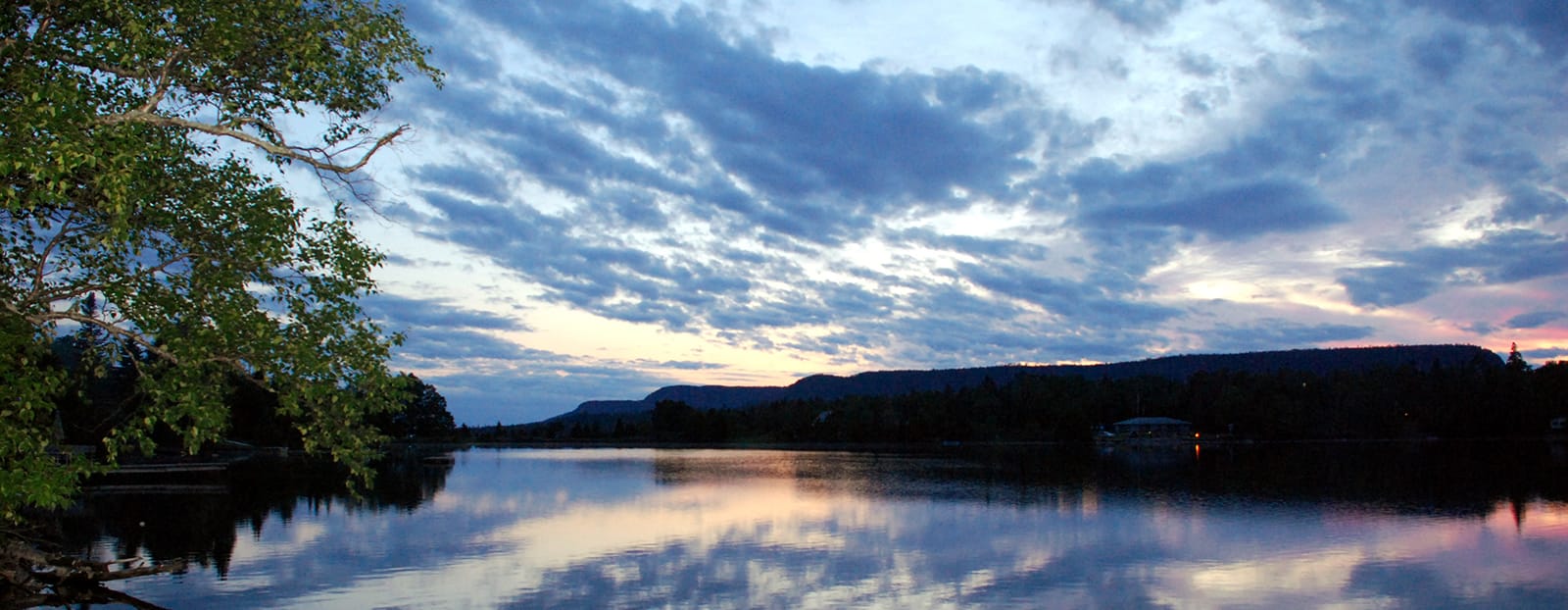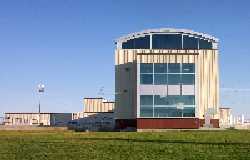 Wastewater goes down the drains from our homes and businesses, travelling through
Wastewater goes down the drains from our homes and businesses, travelling through
the City of Thunder Bay sanitary sewer system to the Water Pollution Control Plant (WPCP). There, it is treated before being sent back into the environment.
Learn more about this interesting process:
| Water Pollution Control Plant Process Description |
|
Raw sewage, from across the City, is collected in large trunk sewers and flows, mainly by gravity, to the Main Pump Station at the Atlantic Avenue Water Pollution Control Plant.
In the Main Pump Station, the raw sewage is pumped to a Parshall flume, where the flow is measured. The sewage then passes through four mechanical bar screens. The bar screens remove large objects such as rags, paper, and wood debris, which is collected and hauled to the City’s Solid Waste and Recycling Facility for disposal.
From the bar screens, the sewage enters an aerated grit tank, where aluminum sulphate is added as the primary coagulant for phosphorus treatment. Heavier materials such as sand, gravel, and grain settle out in the tanks and are removed as grit. The grit is dewatered and sent to the City’s Solid Waste and Recycling Facility for final disposal. At the end of the grit tanks, polymer is added, as a flocculating agent to assist in further phosphorus and solids removal.
From the grit tank, sewage flows through an aerated distribution channel to four primary clarifiers. The clarifiers are large open tanks where the primary sludge solids are allowed to settle to the bottom. Settled organic solids, which include phosphorus, are continuously scraped from the bottom of the tanks and pumped to four anaerobic digesters. Scum, mainly grease, collected at the end of the clarifiers is separated by a rotary screen filter. The liquid scum is separated and thickened in the Dissolved Air Flotation (DAF) plant before being fed to the digesters. The scum screenings are conveyed to a compactor, where they are bagged and collected into a container then transferred to the City’s Solid Waste and Recycling Facility for final disposal.
The liquid portion leaving the primary clarifiers is called the primary effluent. This effluent goes to the Biofor® Biological Aerated Filter plant (BAF) to receive secondary treatment. The BAF plant provides the removal of biochemical oxygen demand (CBOD), total suspended solids, phosphorus and ammonia. There are eight carbonaceous filters to remove the majority of the particulate and CBOD from the wastewater and six nitrification filters to remove ammonia.
The waste generated (waste secondary sludge) in the filters is removed daily by a backwash and thickened by the DAF plant. Both aluminum sulphate and polymer are added to the waste secondary sludge to aid in phosphorus removal and the thickening process. Both the thickened waste secondary sludge and the primary sludge from the clarifiers are mixed in a sludge blend tank prior to being stabilized in the anaerobic digesters.
The anaerobic digesters retain the primary and secondary sludge for approximately 28 days. The content of the digesters are mixed and heated to a temperature of 35°C to support the breakdown of the sludge by the anaerobic bacteria. Digester gas, which contains methane, is produced during the anaerobic digestion process and is partially re‐ circulated in the digesters to provide mixing.
The excess digester gas is piped to a 600kW cogeneration engine to produce electricity and heat for the plant. If the engine is not utilizing the digester gas, it can be burned in any of the four plant boilers for fuel, supplying heat for the digestion process and plant buildings. If the boilers do not require the fuel, the thermal oxidation flare burns the surplus digester gas.
The digested sludge is transferred to the Sludge Dewatering Building where it is coagulated by polymer addition and then mechanically dewatered using high speed centrifuges. The dewatered sludge ‘cake’ or biosolids are hauled to the City’s Solid Waste and Recycling Facility for final disposal. The centrate (liquid separated from the dewatering process) is recycled to the plant Main Pump Station for re‐treatment.
The final plant effluent is discharged to the Kaministiquia River. During the period of April 15 to October 15 of each year, the final effluent is disinfected using ultraviolet light technology to reduce the discharge of bacteria during the recreational water use season.
|
Stormwater is routed through the City's stormwater sewer system. Visit our Stormwater Management Plan webpage for more information.
View the 2024 Wastewater Treatment Annual Report (PDF)
What can go down the drain?
Optimally, only water goes down your drain!
What goes down the drain affects us all. We as a community are responsible for protecting Lake Superior, our drinking water source.
Thunder Bay's Sewer Use By-law (PDF) defines and limits what you can legally put down our sanitary sewers and storm sewers.
Learn more about Household Sewer Management and how to preserve the health of the City's sanitary and storm sewers.
The Household Hazardous Waste Handout (PDF) is a handy guide to disposing of chemicals, prescription drugs and hazardous waste that you must not put down the drain. Note that pharmacies will take back unused and expired prescription and non-prescription medicines and medical sharps for safe disposal.
Click for items you should never put down the toilet or drain: |
Never use the toilet or drain to get rid of:
|
Your sewer connection
Sewer connections are the joint responsibility of the City of Thunder Bay and the property owner. The City is responsible for the portion of the connection on City property, from the main sewer to the property line, and the property owner is responsible for the connection from the property line to the house, and have a threaded cap.
Your front clean-out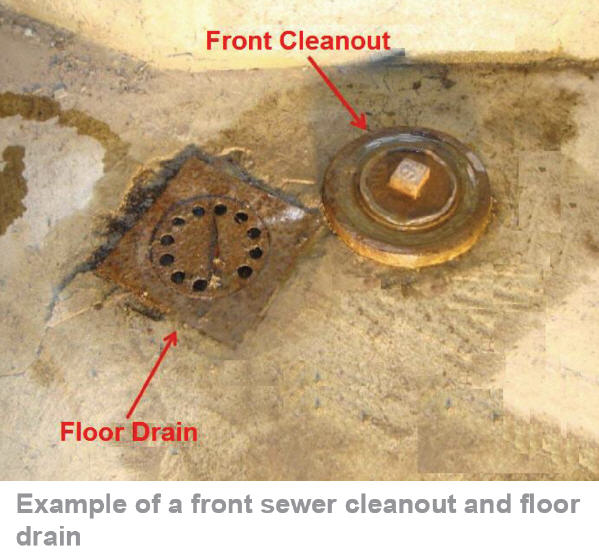
According to the Ontario Building Code, sewer and storm connections must have a front clean-out. Front clean-outs are usually located in the basement floor within one metre of the front wall of the house. Your clean-out allows access for inspection and maintenance.
Please ensure your front clean-out is accessible PRIOR to calling with a sewer or flooding problem.
See our info sheet: Your Sewer Connection.
Problem with your sewer connection? Please report it using the contact info at the bottom of this webpage.
Did you know?
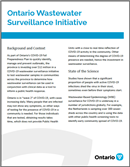 The City of Thunder Bay's Water Pollution Control Plant is participating in the Ontario Wastewater Surveillance Initiative. Under this initiative, communities across Ontario collect samples of their wastewater to be tested for evidence of COVID-19 in the population using the wastewater system. This initiative will help determine how wastewater surveillance can be used in conjunction with clinical data as a tool to inform a public health response.
The City of Thunder Bay's Water Pollution Control Plant is participating in the Ontario Wastewater Surveillance Initiative. Under this initiative, communities across Ontario collect samples of their wastewater to be tested for evidence of COVID-19 in the population using the wastewater system. This initiative will help determine how wastewater surveillance can be used in conjunction with clinical data as a tool to inform a public health response.
For more about this Provincial initiative, see the backgrounder PDF: Ontario Wastewater Surveillance Initiative.
More information:
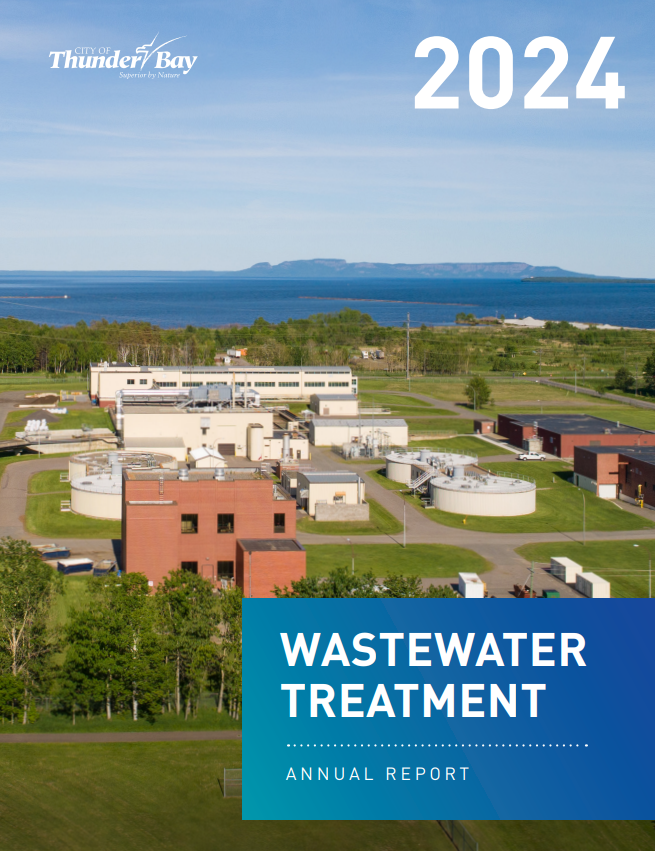 Wastewater Treatment Annual Report
Wastewater Treatment Annual Report
We prepare a yearly Wastewater Treatment Annual Report (PDF) to meet the requirements of the Ministry of the Environment, Conservation and Parks. The Report contains statistics and a description of the pollution control process.
Wastewater System Financial Plan
The Wastewater System Financial Plan (PDF) projects the operating and capital plan for 20 years, from 2014 to 2034. Our goal is to achieve financial sustainability, full-cost recovery, and low cost for consumers while keeping the City’s service levels for sewage collection and treatment.
Report a problem
To report online, use the tool below:
To report by phone, or for more information, contact Infrastructure & Operations Dispatch 24 hours a day at 807-625-2195.
Contact Us


